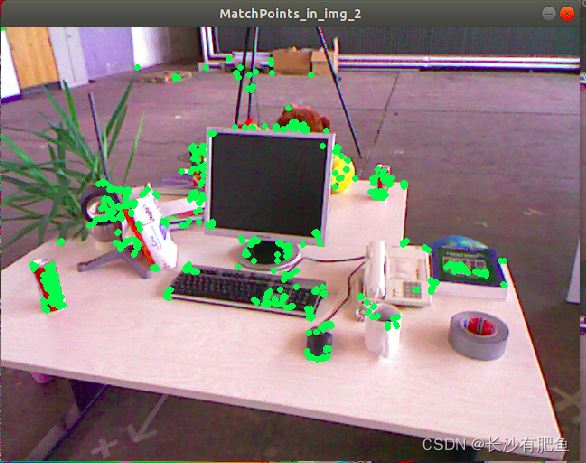What can I use instead of std::aligned_alloc in MS Visual Studio 2013?(在 MS Visual Studio 2013 中,我可以使用什么来代替 std::aligned_alloc?)
问题描述
我想使用 C++11 的 std::aligned_alloc,但不幸的是它不适用于 Microsoft Visual Studio 2013.
I would like to use C++11's std::aligned_alloc, but unfortunately it isn't available with Microsoft Visual Studio 2013.
我正在考虑,intsead,自己实现 aligned_alloc.一个实现应该是什么样的?以下示例无法编译,因为它无法从 void* 转换为 void*&.
I'm considering, intsead, implementing aligned_alloc on my own. How should an implementation look like? The following for example doesn't compile, because it cannot convert from void* to void*&.
template<typename T>
T* aligned_alloc( std::size_t size, std::size_t align )
{
T* ptr = new T[size + align];
std::align(align, size, reinterpret_cast<void*>(ptr), align + size);
return ptr;
}
推荐答案
免责声明:我没有彻底测试此代码.
Disclaimer: I didn't thoroughly test this code.
void* aligned_alloc(std::size_t size, std::size_t alignment){
if(alignment < alignof(void*)) {
alignment = alignof(void*);
}
std::size_t space = size + alignment - 1;
void* allocated_mem = ::operator new(space + sizeof(void*));
void* aligned_mem = static_cast<void*>(static_cast<char*>(allocated_mem) + sizeof(void*));
////////////// #1 ///////////////
std::align(alignment, size, aligned_mem, space);
////////////// #2 ///////////////
*(static_cast<void**>(aligned_mem) - 1) = allocated_mem;
////////////// #3 ///////////////
return aligned_mem;
}
void aligned_free(void* p) noexcept {
::operator delete(*(static_cast<void**>(p) - 1));
}
说明:
如果小于这个值,对齐将调整为 alignof(void*),因为,正如我们将看到的,我们需要存储一个(正确对齐的)void*>.
The alignment is adjusted to alignof(void*) if it's less than that, because, as we will see, we need to store a (properly aligned) void*.
我们需要 size + alignment - 1 字节以确保我们可以在其中找到具有正确对齐的 size 字节块,以及额外的 sizeof(void*) 字节来存储 ::operator new 返回的指针,以便我们稍后可以释放它.
We need size + alignment - 1 bytes to ensure that we can find a size byte block in there with the right alignment, plus an additional sizeof(void*) bytes to store the pointer returned by ::operator new so that we can free it later.
我们用::operator new 分配这块内存,并将返回的指针存储在allocated_mem 中.然后我们将 sizeof(void*) 字节添加到 allocated_mem 并将结果存储在 aligned_mem 中.在这一点上,我们还没有对齐.
We allocate this memory with ::operator new and store the returned pointer in allocated_mem. We then add sizeof(void*) bytes to allocated_mem and store the result in aligned_mem. At this point, we haven't aligned it yet.
在点 #1,内存块和两个点看起来像这样:
At point #1, the memory block and the two points look like this:
aligned_mem (not actually aligned yet)
V
+-------------+-----------------------------------------+
|sizeof(void*)| size + alignment - 1 bytes |
+-------------+-----------------------------------------+
^
allocated_mem points here
std::align 调用调整 aligned_mem 以获得所需的对齐方式.在第 2 点,它现在看起来像这样:
The std::align call adjusts aligned_mem to obtain the desired alignment. At point #2, it now looks like this:
aligned_mem (correctly aligned now)
V
+---------------------+---------------------------------+
| extra space | at least size bytes |
+---------------------+---------------------------------+
^
allocated_mem points here
因为我们从 sizeof(void*) 字节开始,超过 allocated_mem,所以额外空间"至少是 sizeof(void*)字节.此外,aligned_mem 与 void* 正确对齐,因此我们可以在它之前存储一个 void*.在第 3 点,内存块看起来像这样
Because we started at sizeof(void*) bytes past allocated_mem, the "extra space" is at least sizeof(void*) bytes. Moreover, aligned_mem is correctly aligned for void*, so we can store a void* right before it. At point #3, the block of memory looks like this
aligned_mem (returned to caller)
V
+---------------+-----+---------------------------------+
| | ^ | at least size bytes |
+---------------+--+--+---------------------------------+
^ |
allocated_mem value of allocated_mem
points here stored here
对于aligned_free,它只是读取存储在那里的指针并将其传递给::operator delete.
As to aligned_free, it simply reads the pointer stored there and passes it to ::operator delete.
这篇关于在 MS Visual Studio 2013 中,我可以使用什么来代替 std::aligned_alloc?的文章就介绍到这了,希望我们推荐的答案对大家有所帮助,也希望大家多多支持编程学习网!
本文标题为:在 MS Visual Studio 2013 中,我可以使用什么来代替 std::aligned_alloc?


基础教程推荐
- 这个宏可以转换成函数吗? 2022-01-01
- 我有静态或动态 boost 库吗? 2021-01-01
- 在 C++ 中计算滚动/移动平均值 2021-01-01
- 如何检查GTK+3.0中的小部件类型? 2022-11-30
- 如何将 std::pair 的排序 std::list 转换为 std::map 2022-01-01
- 常量变量在标题中不起作用 2021-01-01
- 如何在 C++ 中初始化静态常量成员? 2022-01-01
- C++结构和函数声明。为什么它不能编译? 2022-11-07
- 如何通过C程序打开命令提示符Cmd 2022-12-09
- 静态库、静态链接动态库和动态链接动态库的 .lib 文件里面是什么? 2021-01-01

















